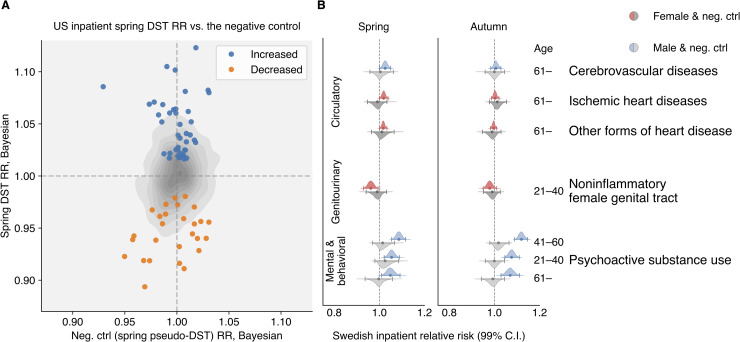Fig 2.
(A) Spring RR estimates versus the negative control results in the US inpatient population. The gray contour represents the empirical estimation of the joint distribution for all RR estimates. The blue and orange markers accent the increased and decreased signals selected by an impartial procedure based on effect size and significance (see S1 Appendix Section 2.1) (B) All conditions showing significant change around the DST shift analyses in the Swedish data after 1980. None of their corresponding negative controls were significantly different from one. As in the US data, we observed an increased RR in ischemic and other forms of heart disease in the senior population and mental and behavioral disorders due to psychoactive substance use in middle-age males. The RR for cerebrovascular diseases in senior inpatients increased in Sweden in the week following the spring DST shift, confirming the increase (with no statistical significance) in US inpatients. By contrast, in the US all-patient population, cerebrovascular diseases actually decreased significantly (S10 Table and S12 Table).

